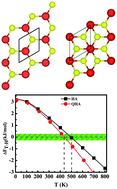Among dozens of layered transition metal dichalcogenides (TMDs), VS2 has attracted particular interest due to its intrinsic magnetism and potential applications as a high-performance functional nanomaterial. The phase stability and electronic properties of the typical crystal structures of both monolayer and bulk VS2 are carefully investigated based on first-principle calculations. The results reveal that the relative stability between different phases is greatly affected by the thickness of the layers and the temperature. Below room temperature, both bulk and monolayer VS2 prefer to exhibit the hexagonal (H) structure instead of the trigonal (T) structure. Interestingly, at room temperature, although the H monolayer VS2 remains more stable than the T-VS2, the bulk T-VS2 becomes more stable than H-VS2. These results reveal that a phase transition between H and T will occur on changing either the thickness of the slab or the temperature. Furthermore, the different crystal structures (H and T) exhibit significantly distinct magnetism: the bulk T-VS2 has the lowest magnetism (0.31 μB), while the monolayer H-VS2 has the largest magnetism (about 1.00 μB) among the structures. Most importantly, our results reveal that the magnetism will increase sharply on the exfoliation of monolayer VS2 from the bulk at room temperature because of the phase transition from T to H. The present results provide an efficient way to modulate the magnetic moment through controlling the crystal structure and the thickness of the VS2 nanosheets.

You have access to this article
 Please wait while we load your content...
Something went wrong. Try again?
Please wait while we load your content...
Something went wrong. Try again?


 Please wait while we load your content...
Please wait while we load your content...